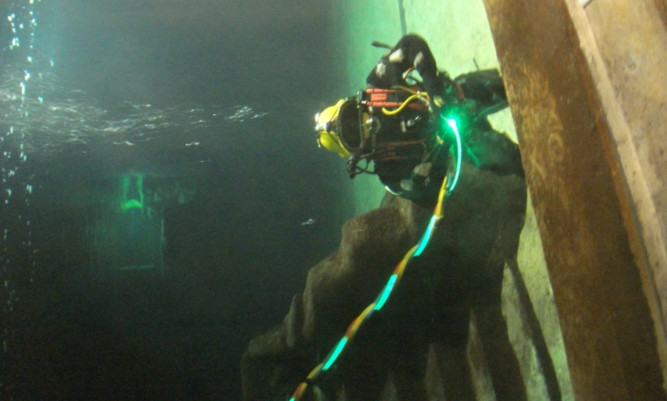A St Andrews University spin-out technology company is to start sea trials of a new compact subsea lighting system before the end of the year.
Photosynergy Ltd (PSL) said industry feedback had led it to further develop its Lightpath concept, a system that last year scooped Subsea UK’s prestigious Innovation for Safety Award.
PSL said testing of its SLS5000 system had led to comments about size and underwater usability.
The company has now created a compact unit which provides a light source to saturation divers via an LED attached to the umbilical at the divers’ end.
The development of the SLS2000 follows the successful launch earlier this year of the deep-water SLS7000, a version of Lightpath that may help identify the position and orientation of seabed operations down to 3,000m.
Despite the cutbacks in the North Sea arising from the low oil price, PSL said firms were still keen to invest in proven deep-water technologies.
“We had been testing the SLS5000 with a number of clients during its development phase and had received feedback from divers and their teams on the benefits of having a low power, minimal sized package, which would not impede the diver and which could be illuminated from the diver end as opposed to the dive bell end,” PSL director Don Walker said yesterday.
“The first unit was ready for testing just two months after we received the initial feedback on specific requirements.
“As a sealed-for-life unit, it’s a first for PSL and simplifies the construction in terms of its complexity, part count and minimal size, and maintenance while retaining the lighting concept.
“It’s our aim to start sea trials by the end of this year at the very latest.”
While Lightpath has been targeted at the subsea sector, PSL believes it could be used in a wide range of industries from guide path illumination through to other applications in challenging, hazardous and submerged environments.
PSL has its origins in scientific research undertaken at St Andrews University’s Photonics Innovation Centre at North Haugh. Its long-term aim is to establish Lightpath as a global commercial product for the domestic upstream oil and gas supply chain.
